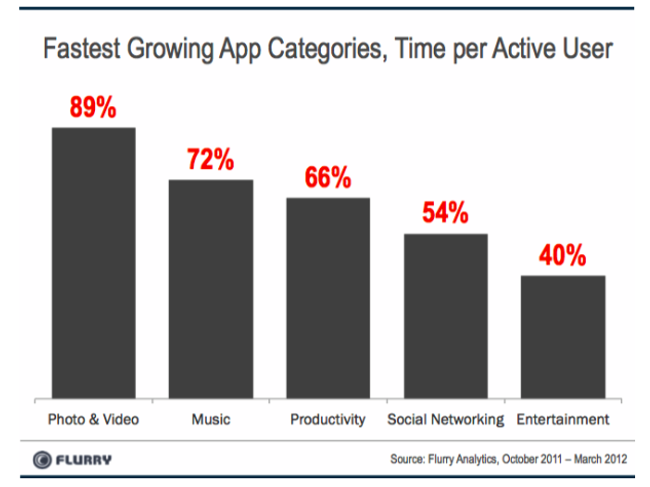Every time you look at your Facebook Timeline lately somebody has watched a video on Socialcam and Viddy. Why does it seem this has happened all of a sudden and what does it mean for the original of the species, YouTube?
Let’s be clear about one thing, social sharing apps like Viddy have a lot of catching up to do to put a serious dent in YouTube’s traffic. After Google, YouTube is the second largest search engine on Earth. But the threat could be more to do with how we are changing as users of internet technology.
YouTube, which just celebrated seven years in existence, currently sees more than 65 hours of video uploaded every minute and about three-quarters of the material comes from outside the US.
But spurred on by the success of Instagram, Hipstamatic, Viddy, Socialcam and Chill, Facebook Timelines for most users are beginning to flood with everything from the sublime to the ridiculous. And that’s normally YouTube’s domain.
But think about it for a second. These videos on social sharing apps tend to be quite short in duration – about 15 second on Viddy – so perhaps it’s a niche within a niche. If the capacity expands then clearly, notwithstanding its edge in cat videos, YouTube has a battle on its hands.
Or does it. Apps like Viddy, like Instagram, have no discernable revenue model to speak of. Yet they create audiences and communities in a fun and engaging way.
So is YouTube in Viddy’s crosshairs?
According to research on the Flurry Blog, the rise of Instagram, Path, Skout and Viddy show consumers are finding new and compelling ways to spend their time in social apps and on smartphones beyond video games.
Leveraging a sample of 8m active mobile app users across all app categories Flurry revealed that the fastest growing app category was photo and video, followed by music, productivity, social networking and entertainment respectively.

The photo and video category showed the most growth of 89pc between October 2011 and March 2012.
According to Flurry Blog author Peter Farango the overnight sensation of video sharing apps has been more like a “nine-month tsunami gaining power.”
Farango said: “Looking at growth from July 2011 to March 2012, time spent in Photo & Video has grown by 166%. Video sharing apps offer a compelling benefit to consumers, allowing them to conveniently capture, edit and share videos on-the-fly using the powerful mobile computing devices in their pockets.
“Trained by the sharing behaviour of Facebook, and enabled by a confluence of underlying technology like built-in HD video cameras, hardy on-device processors, increased network bandwidth, cloud storage and user-friendly applications like Viddy and Socialcam, social video apps are taking off. It’s a meaningful example of the unique innovation possibilities afforded by mobile apps.”
There will be no Web 3.0 – so bring out your dead
While YouTube may have been Google’s star acquisition in 2006 worth US$1.65bn, Farango suggests cool kids in the form of Viddy and Socialcam threaten to disintermediate the juggernaut’s acquisition.
In a recent Forbes article Eric Jackson summed up the new breed of social companies typified by Instagram: “They don’t even think of launching via a web site. They assume, over time, people will use their mobile applications almost entirely instead of websites.”
He concludes: “We will never have Web 3.0, because the Web’s dead.”
If this is true then YouTube has a battle on its hands; a battle that will intensify once these apps learn how to monetise.
Perhaps clever moves on Google’s part such as introducing HangOuts on Air that bring live events and video straight to the YouTube ecosystem might help it maintain its edge.